Ask any fan of Lost to explain what made the show so compelling to watch and you’ll probably get talk of bunkers, flashbacks, smoke monsters, and polar bears. Although those things certainly were a part of the reason why the show became such a fixation for viewers everywhere, what made them stay were the flawed, contradictory, and endlessly relatable human characters.
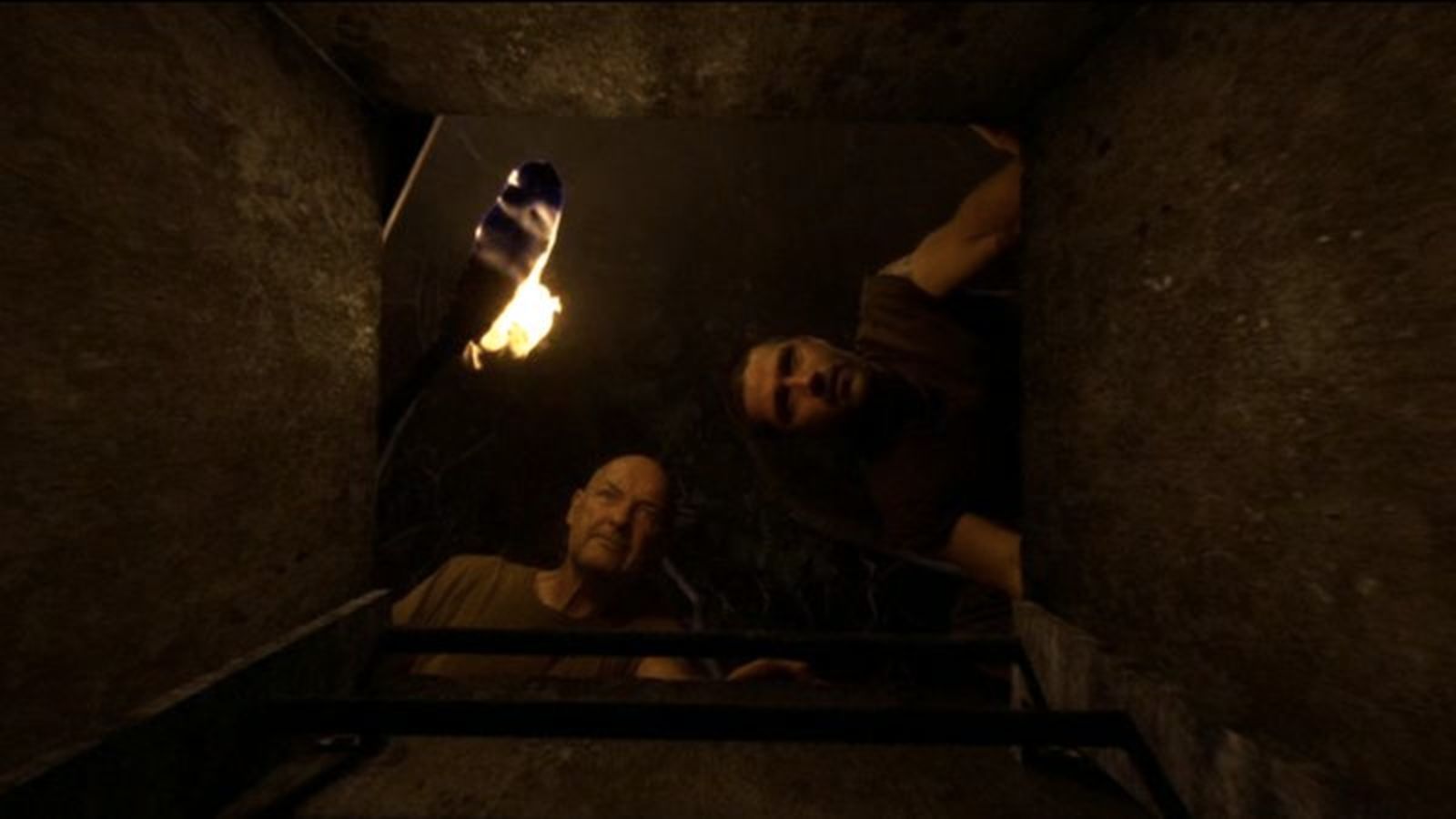
Jack, Locke, Kate, Michael, Claire, Sun, Jin, Desmond, Hugo, and Sawyer all became mirrors through which we judged ourselves and those around us. And yet, these characters wouldn’t have been as interesting if the mysteries surrounding Oceanic Flight 815 and the island on which we spent most of our time in the series didn’t include the bunker, all the secrets, and the polar bear. It had to be taken as a whole. The comics world certainly noticed Lost and saw in it a winning formula that wasn’t only easy to adapt given the serialized nature of the medium but also because it seemed to speak the language of comics so well.
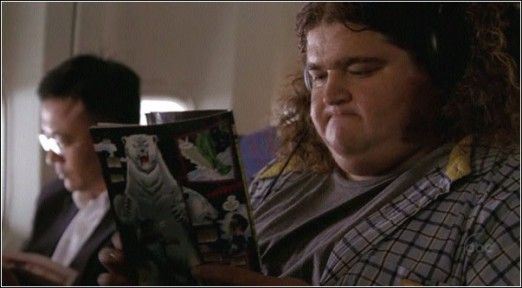
Lost can be described as a seriously slow and controlled burn of a story that lives and dies by the constant reveal of its secrets. Once it revealed some of these secrets, though, it would create new ones and send the series in for another in a long line of loops that many think spiraled out of control come the series finale.
Ongoing comic book series had more than enough experience in this type of storytelling. What Lost brought to the table, in this regard, was the idea of slowing the pacing of the story reveals down to a crawl, stretching the endgame while turning the journey to the final reveal into one big guessing game.
Among one of the best examples of this is Morning Glories by Nick Spencer and Joe Eisma, published by Image Comics. The story followed six students as they arrive at Morning Glory Academy, one of the most prestigious prep schools in the country. What they find is a place of closed doors populated by students and educators that knew more than they let on about the strange physics and time anomalies affecting the school.
This series takes many of Lost’s building blocks when crafting its story arcs. It has strange structures and machines run by people trying to understand this one big mystery that seems to defy reason at the center of it all. It goes through layers of secrets and character flashbacks that reveal hidden agendas and it slowly turns each character into a puzzle piece that explains one part of the larger picture, which was another clever idea Lost developed with its characters.
Morning Glories’ connection to Lost can best be appreciated when looking at the grand design of the comic book series. Not one character takes the spot of the perfect hero or the moral compass. In fact, the moral compass is passed around, sometimes forgotten and sometimes invoked in extreme fashion.
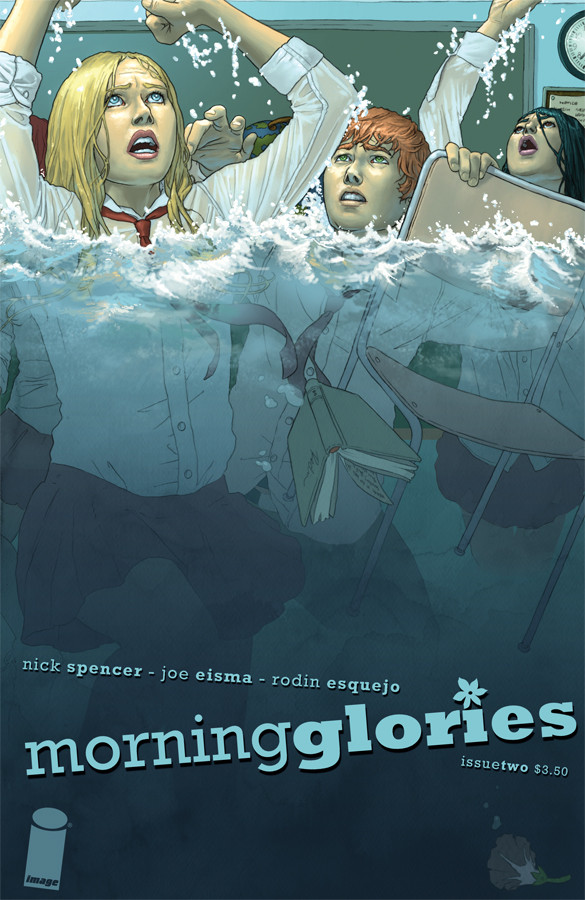
Lost did this with its characters to an outlandishly successful degree. Sawyer’s character was perhaps the best example. His actions were both easy to condemn and easy to understand. Where we see a criminal in some episodes, we see a broken man looking for revenge in another. The point never was to see the character necessarily redeem himself. As I believe was the case with all of Lost‘s characters, the point was to understand them. Morning Glories goes the same route, asking readers to understand why certain characters do the things they do while asking us whether we would’ve done anything differently.
Of note is the fact that Morning Glories inspired the coming together of a community dedicated to deciphering the secrets behind Morning Glory Academy, as was the case with Lost during its series run. Message boards became multi-tiered meeting places filled with theories and symbolic readings of the show for the purpose of cracking the story’s many unknowns.
The Bunker by Joshua Hale Fialkov and Joe Infurnari (Oni Press) goes down the same route as Morning Glories, only it unreservedly borrows one obvious element from Lost: the titular bunker. In Lost, the bunker is revealed to be a kind of controlled test environment inhabited by one Desmond Hume, a man who is tasked with inputting a series of numbers into a computer to keep the world from ending (or so he’s told). In The Bunker, we get a bunker from the future holding letters and artifacts sent from the future by five friends to warn their past selves about a coming global catastrophe.
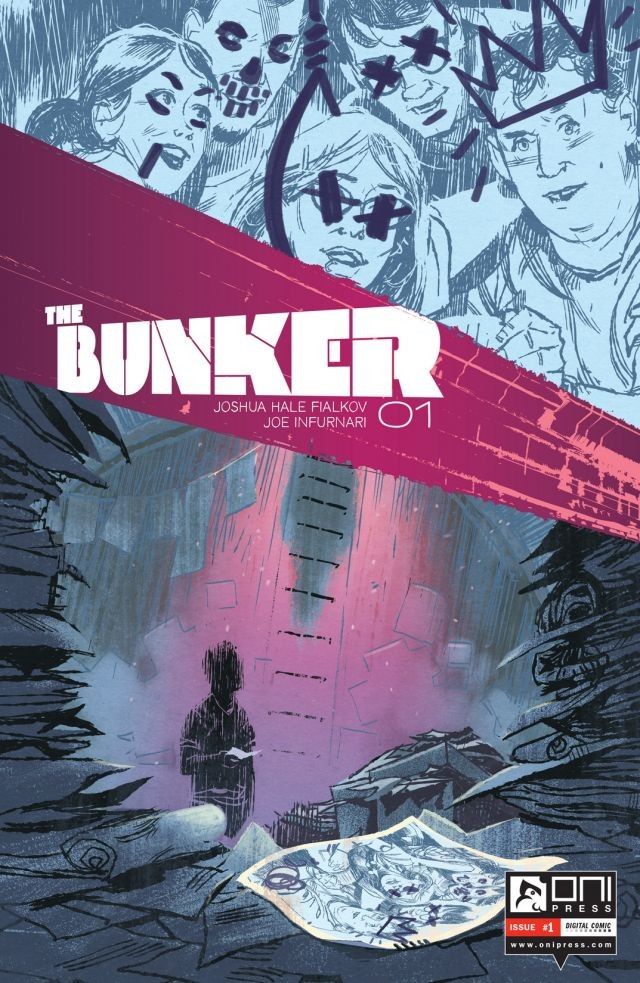
This is series is another slow burn with, again, its five main characters becoming essential pieces of a world-altering puzzle. That it revolves around the discoveries found in this particular bunker is what’s interesting. Among the artifacts we find clues that lead to the realization that one or several of the five friends might be responsible for the coming apocalypse. In Lost it’s Desmond who’s standing between the end or the continuation of life on Earth. In both cases, the bunker acts as a metaphor for the inner workings of existence and how so few people seem to be responsible for its sustainability. Or its destruction.
As continues to be the case, it’s the characters’ backstories that drive their present and future actions. Lost-inspired comics are character studies drenched in secrecy.
The Woods by James Tynion and Michael Dialynas, published by BOOM! Studios, continues the trend in a story that sees a school with some 500 students disappear and reappear in the forested moon of a planet located in a different star system altogether.
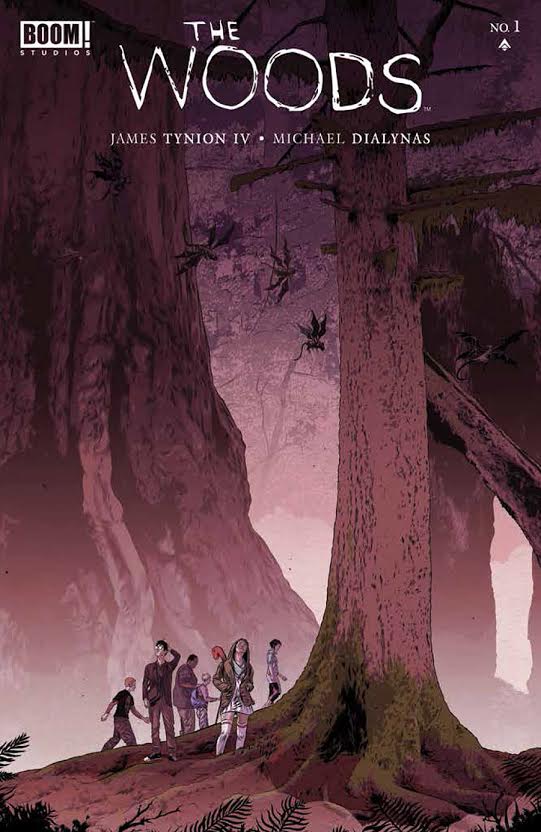
Tynion and Dialynas turn the school environment into its version of Lost’s bunker, with the students embodying the story’s secrets. It’s a deliberately paced unraveling of human drama that navigates its character’s imperfections in a place that is notoriously known for doing precisely that: the school environment. The Woods takes more from horror than scifi here, which distances itself a bit from Lost in terms of tone, but the bigger concepts behind the story follow in the footsteps of the tv show.
More recently we have Paper Girls by Brian K. Vaughan and Cliff Chiang (Image Comics), about a group of girls (who deliver newspapers) that see their status quo turned on its head as time travel, different timelines, and giant monsters invade their reality. Vaughan was a writer on Lost (his Y: The Last Man comic makes a cameo appearance in the show, being read by Hugo before he boards Ajira Airways Flight 316), coming in during the later seasons.
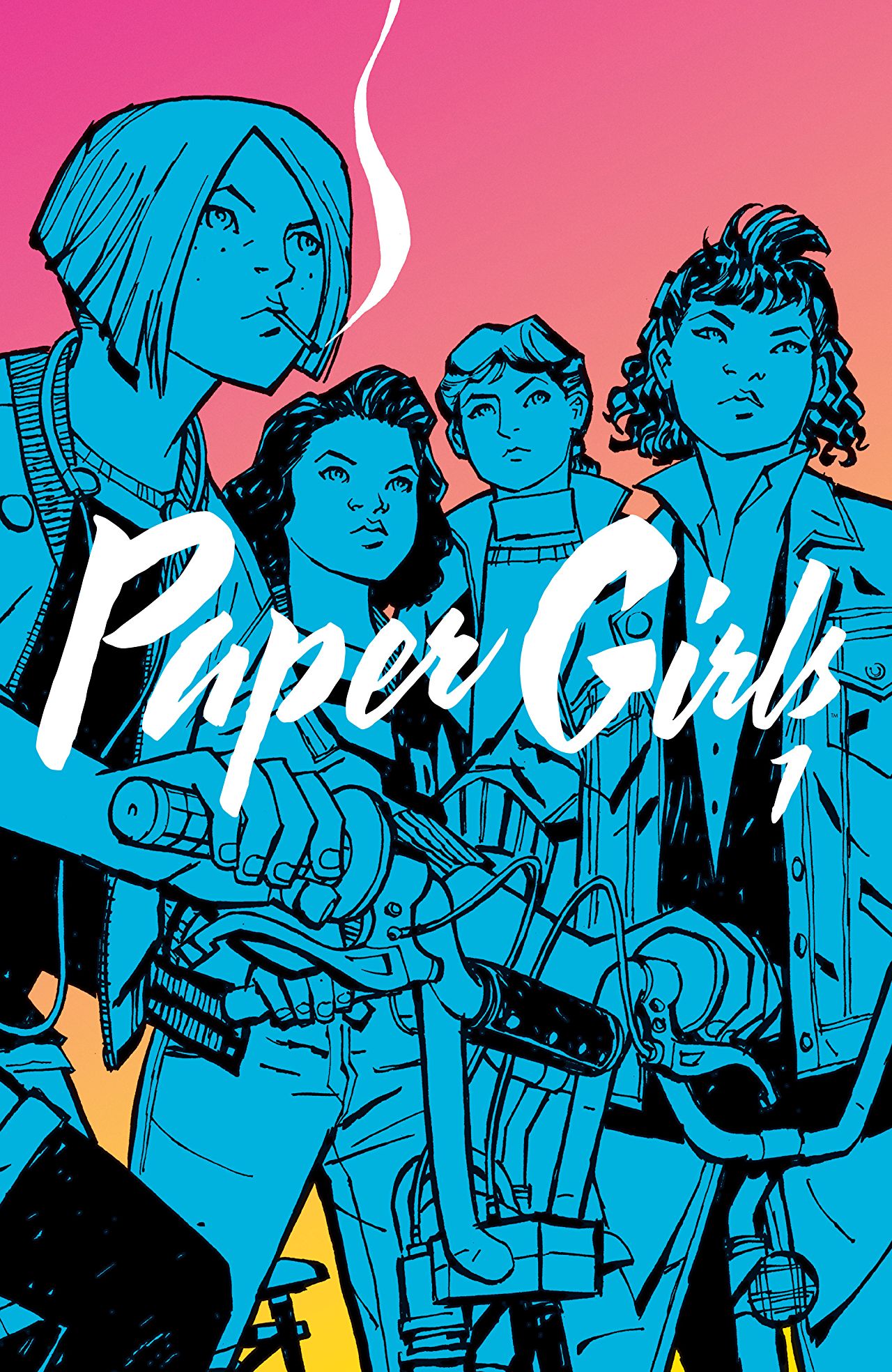
Each of the characters is a kind of Pandora’s box, with dangerous reveals and conflicting narratives clashing amongst themselves as the story progresses. Reveals take center stage once again, but what sets Paper Girls apart is the emotional weight of each reveal. When one of the girls is met with a revelation that puts them at risk of emotional collapse, the reader is treated to highly emotional character interactions that change the tone of the whole story. Each twist and turn alters the story so profoundly that it makes the series feel as if it is constantly reinventing itself.
The emotional arcs in Paper Girls echo those from Lost. I was reminded of Jin and Sun’s story arcs while reading Vaughan and Chiang’s book, especially in terms of how each character grows emotionally. Every loss and every victory raises the stakes to such a degree that the friendship at the core of the story becomes even more precious in the face of constant danger.
This is precisely what made character pairings such as Jin and Sun or Charlie and Claire so easy to get invested in as Lost progressed. Every pull of the curtain behind their backstories built upon the importance of each relationship. It made them feel as if they needed each other to survive, that alone they would be less equipped to deal with the perils of the island. Paper Girls does almost the same thing in this regard.
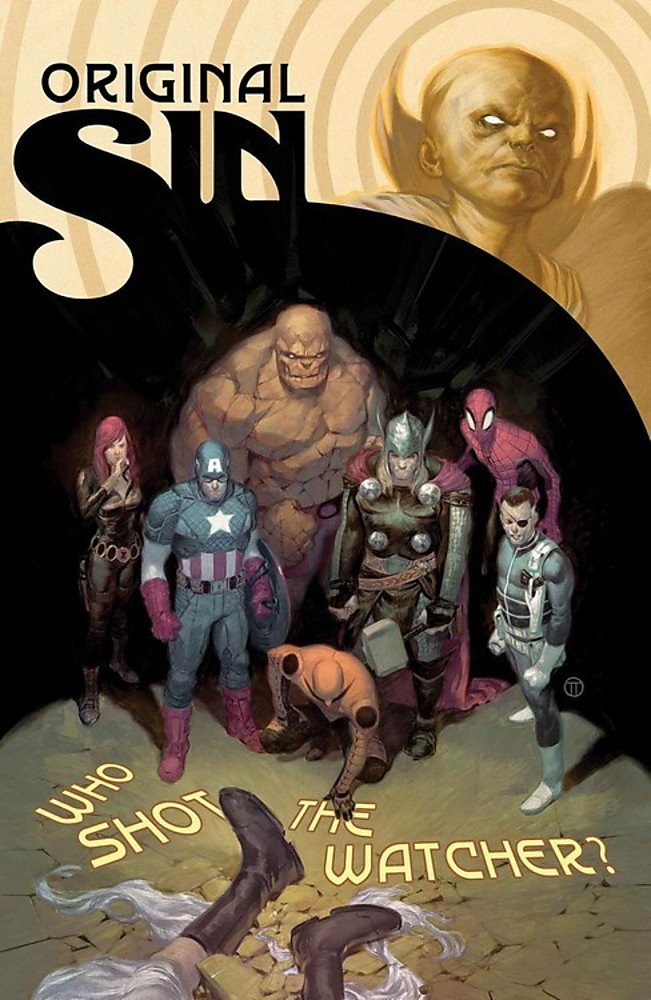
This is not meant to be a definitive look at the only comics that were inspired by Lost. The show left a very complex and labyrinthian-like storytelling template that we’ve seen more of year after year. Marvel’s Original Sin event is very Lost-inspired in its focus on the murder of The Watcher, with Nick Fury taking on a Locke-style role in the story. The mystery lies in the smallest of details, but it’s the characters’ own personal demons that push the story forward. This was the event that saw Thor become unworthy of Mjolnir.
DC’s Event Leviathan has some hints of Lost in it as well, as the reveals behind the real identity of its main villain have been trickling down in a slow burn of a story that is just a few issues long. It’s impressive that Brian Michael Bendis and Alex Maleev have been able to pull this off in such a short timeframe.
Comics found a bold and replicable storytelling model in Lost, a tv show about people stuck on an island that might as well have been in the shape of a question mark. While the concepts and ideas surrounding it fit in well with comics — and to be fair, Lost wasn’t the originator of the slow burn mystery tv show or the slow burn mystery comic — it was in the combination of character development, high-concept science fiction elements, and trickle-down reveals that the series became a source of inspiration for many comic creators. I think it’s fair to say that comics just really got Lost, and it helped them find some great stories along the way.


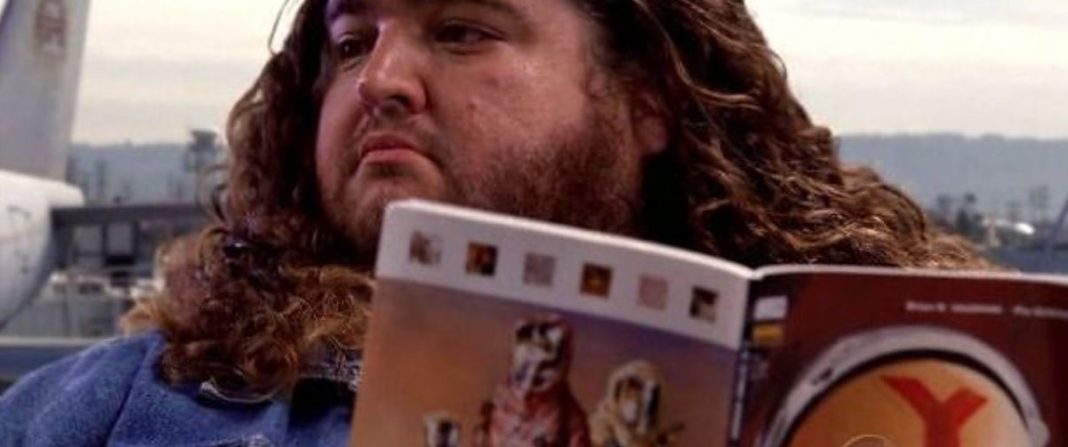
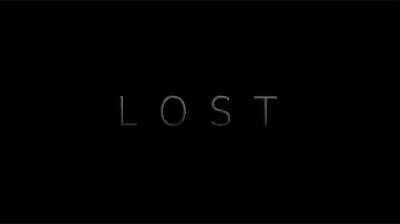


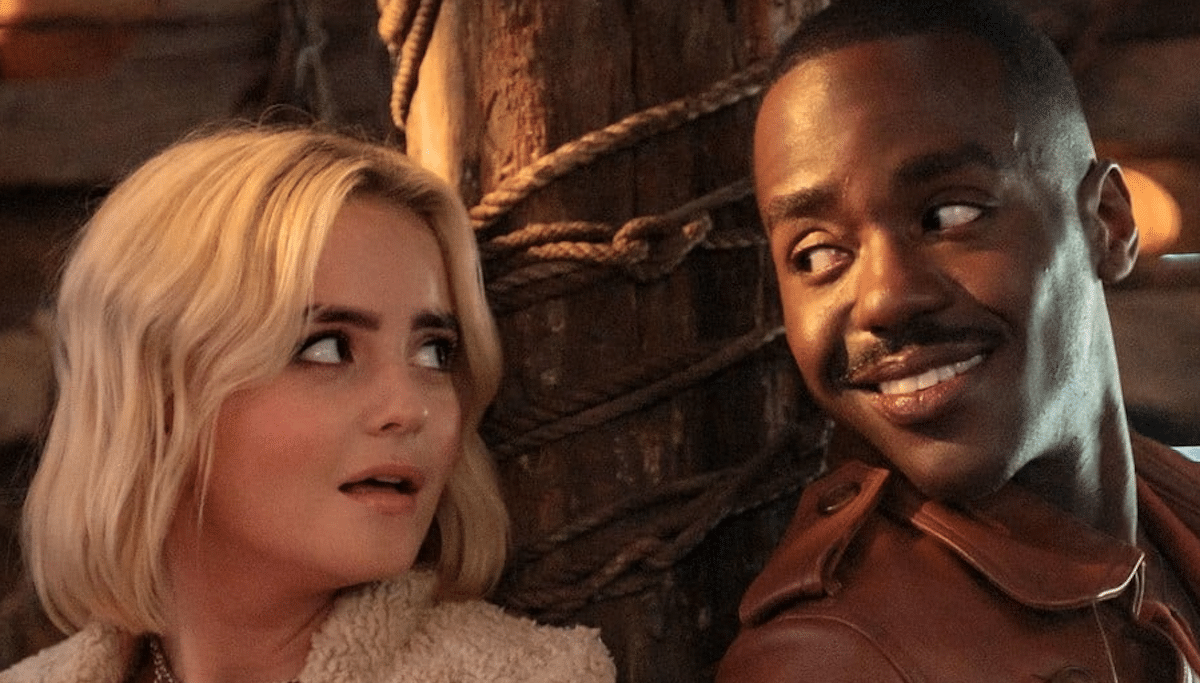


Comments are closed.